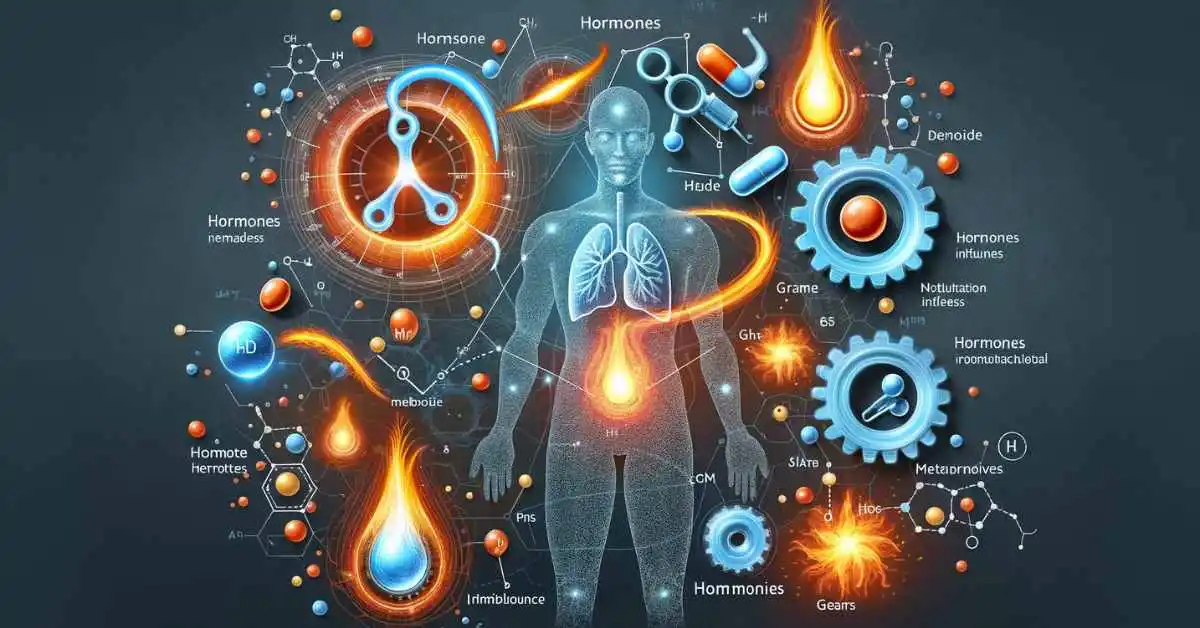The Science of Metabolism and Weight Loss
Enter the fascinating world of metabolic rate and its pivotal role in weight loss with our vast exploration of the science of metabolism and weight loss. This deep dip solves the complexities of how Caloric Intake and Physical Activity synergistically contribute to the intricate Fat Burning Process.
Embark on this enlightening journey to understand the foundational principles that govern your body’s energy management and its profound impact on your fitness and health goals.”
Disclosing the Mysteries of Metabolism in Weight Loss
Understanding Your Metabolic Rate and Its Role in Weight Management
- Definition and Significance: Metabolic Rate is the rate at which your body expends energy or burns calories. Understanding it is crucial in tailoring a weight management plan that suits your body’s needs.
- Factors Affecting Metabolic Rate: Several factors influence metabolic rate, including age, gender, muscle mass, and physical activity level. We’ll explore how these factors interact and their implications for weight management.
The Impact of Hormonal Influence on Metabolism

- Hormones and Metabolism: Hormones play a significant role in regulating metabolism. This section will focus on critical hormones like thyroid hormones, insulin, and cortisol and how they influence your metabolic rate.
- Balancing Hormones for Optimal Metabolic Health: Strategies for maintaining hormonal balance through diet, lifestyle changes, and possibly medical intervention will be discussed, highlighting their importance in maintaining a healthy metabolic rate.
Optimizing Caloric Intake for Effective Weight Loss

Understanding and managing your caloric intake is crucial for successful weight loss. This section will explore how to balance nutrition with energy expenditure and delve into the nutritional science that underpins healthy eating habits.
Balancing Nutrition and Energy Expenditure
1. Understanding Caloric Intake: Caloric intake refers to the total number of calories consumed through food and beverages. For effective weight loss, it’s essential to consume fewer calories than your body expends, creating what’s known as a caloric deficit.
2. Calculating Energy Expenditure: Energy expenditure is the total amount of calories your body uses for essential functions (basal metabolic rate), physical activity, and processing food (thermic effect of food). Knowing your energy expenditure can help you set realistic caloric intake goals for weight loss.
3. Creating a Caloric Deficit: The key to weight loss is to create a sustainable caloric deficit. This can be achieved through a combination of reducing caloric intake and increasing physical activity.
4. Avoiding Extreme Caloric Restriction: Extremely low-calorie diets can be counterproductive, leading to muscle loss, decreased metabolism, and other health issues. It’s essential to find a balance that reduces calories while still providing necessary nutrients.
Nutritional Science Behind Healthy Eating
1. Quality of Calories: Not all calories are created equal. The focus should be on nutrient-dense foods that provide vitamins, minerals, and other essential nutrients rather than empty calories found in processed and sugary foods.
2. Macronutrient Balance: Understanding the roles of proteins, fats, and carbohydrates is crucial. A balanced diet includes an appropriate ratio of these macronutrients to support overall health and weight loss.
3. Role of Fiber and Whole Foods: High-fiber foods, such as whole grains, fruits, and vegetables, can increase feelings of fullness and reduce overall calorie intake. They also contribute to digestive health.
4. Hydration and Weight Loss: Adequate water intake is essential for metabolism and can aid in weight loss. Sometimes, thirst is mistaken for hunger, so staying hydrated can help prevent overeating.
5. Tailoring Diet to Individual Needs: Everyone’s body is different. It’s essential to tailor your diet to your individual health needs, preferences, and lifestyle for sustainable, healthy eating habits.
By combining a balanced approach to nutrition with an understanding of energy expenditure, you can create a compelling and sustainable plan for weight loss. The principles of nutritional science provide a foundation for making informed choices about what and how much to eat, leading to healthier eating habits and successful weight management.
Integrating Exercise into Your Weight Loss Strategy

It involves a holistic approach that incorporates metabolic rate, nutritional science, and physical activity into an effective weight management strategy. Integrating exercise into your routine is not just about burning calories; it’s a fundamental aspect of catalyzing the fat-burning process and fostering long-term health.
Physical Activity: A Catalyst in the Fat Burning Process
- The Role of Exercise in Boosting Metabolism: Regular physical activity increases your metabolic rate, helping your body burn more calories, even at rest.
- Types of Exercise for Maximized Fat Burning: Incorporating a mix of cardio, strength training, and flexibility exercises can optimize the fat-burning process. Each type of exercise contributes uniquely to weight loss and overall health.
Creating a Sustainable Exercise Routine for Long-Term Health
- Consistency Over Intensity: Developing a consistent exercise habit is more beneficial for long-term health than sporadic, high-intensity workouts.
- Tailoring Exercise to Individual Preferences: Choose activities you enjoy to ensure sustainability and adherence to your exercise regimen.
- Incorporating Exercise into Daily Life: Beyond structured workouts, look for opportunities to add more physical activity to your daily routine, such as taking the stairs or walking during breaks.
FAQs about Science of Metabolism and Weight Loss
How Does Metabolic Rate Affect Weight Loss?
The metabolic rate determines the rate at which your body expends energy. A higher metabolic rate means more calories burned, contributing to weight loss. Effective weight loss strategies often aim to increase the metabolic rate through physical activity and dietary changes.
Can Dietary Changes Influence Metabolism
and Weight Management?
Absolutely. Dietary changes, particularly those that focus on caloric intake and the quality of nutrients, directly impact metabolism. A diet rich in whole, nutrient-dense foods can boost metabolic efficiency, while overconsumption of processed and high-calorie foods may slow down metabolism.
What Is the Relationship Between Physical Activity and Metabolism?
Physical activity plays a crucial role in enhancing metabolism. Regular exercise increases muscle mass, which in turn boosts the body’s metabolic rate, leading to more efficient fat-burning and energy usage. This relationship is fundamental in creating an effective weight loss strategy.
Conclusion:
In summary, the journey of understanding The Science of Metabolism and Weight Loss is multifaceted. It involves a harmonious blend of managing your metabolic rate, making informed dietary choices, and integrating consistent physical activity into your lifestyle. Recognizing how these elements interconnect offers a more effective and sustainable approach to weight loss and overall health. Embrace these practices not just as temporary measures but as lifelong commitments to nurturing your body and achieving lasting wellness.


